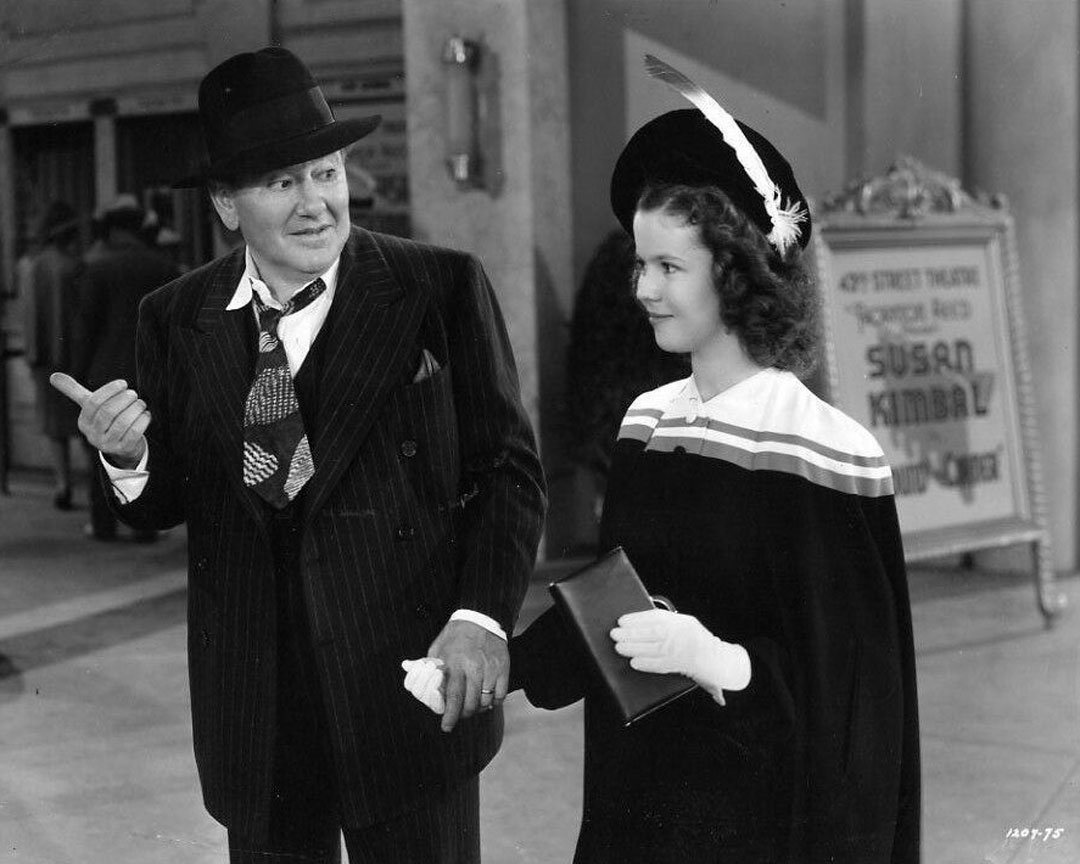
In “Kathleen,” Shirley’s one and only film for MGM, she plays a girl who dreams her life the way she wants it. In one of her dreams, she is discovered while walking down the street and immediately cast as the lead in a Broadway show. Although uncredited, the set design belongs to Vincente Minnelli, who had just begun his illustrious career at MGM. According to A Hundred or More Hidden Things: The Life and Films of Vincente Minnelli by Mark Griffin:
Vincente reportedly stopped the show with something other than his conceptual ideas for the film’s big production number “Around the Corner.” Several of the contract dancers who worked on the film claimed that Minnelli appeared on the set wearing cosmetics—lipstick, mascara, eye shadow—enough chemical enhancement that Max Factor should have been beaming with pride. As dancer Dorothy Raye recalled, “There was absolute silence on the set. I mean silence! Nobody had ever appeared looking like that. None of us could think of what to say.”
Dancer Dorothy Raye? The only dancers we see on screen in this number are male. Faulty memory on Dorothy’s part?
Not at all! The musical number was originally longer, and included a calypso portion with both male and female dancers.
As Shirley recalled later in her 1988 autobiography Child Star:
During a dream sequence, I was a mulatto in a calypso straw hat, oatmeal pants cut short, and rigged with a bongo drum on each hip. A hydraulically operated dance floor rose and fell while the lavish dance-musical number pulsed and swirled in a melange of tap-tango and tap-rhumba. For our large cast of actors and dancers the rehearsal was long, relentless, and sweaty. In a rare exception, I grew tired a few minutes before my statutory four hours of work had expired. Mother noticed. Approaching an assistant director, she suggested that as it was already evening, a break until morning would be good for everyone. The director construed her comment as related only to me and replied tersely that I should be ordered to work harder, not rest. Everyone was getting testy, including Mother. She refused to comply and told me to prepare to go home. Things came rapidly to a boil.
Voice coach Roger Edens was summoned, accompanied by a breathless, intense front-office type in coat and tie. Both urged Mother to order me to continue. “Not when she won’t do her best,” she answered stiffly. Nobody asked me if I wanted to continue, or anything at all. Speaking in low, even tones but easily overheard, Edens said, “Look, this is Metro, Mrs. Temple. We work right through. Judy just had her eighteenth birthday and we worked her all night, until 4:00 a.m. She loved it! A mark of maturity.” “And wait until Shirley’s eighteen,” chimed in the other man. “We’ll work her all night, just like Judy.” Mother turned, eyes glistening. “Well, she’s not eighteen yet.” She squared herself toward Edens. “I won’t order her to do it. If you do, you’ll get rotten results!” That’s just what they did, and that’s just what they got.
MGM was known for spending lavishly, but they also knew how to save a buck, too. They ended up using the sets and costumes from Shirley’s deleted scene for Judy Garland’s “Minnie From Trinidad” number in “Ziegfeld Girl.”
Here’s a previously posted shot of Shirley and husband John Agar at a movie premiere with Judy and Vincente. I get the feeling the two couples didn’t double-date very much!
See more photos at my main website.

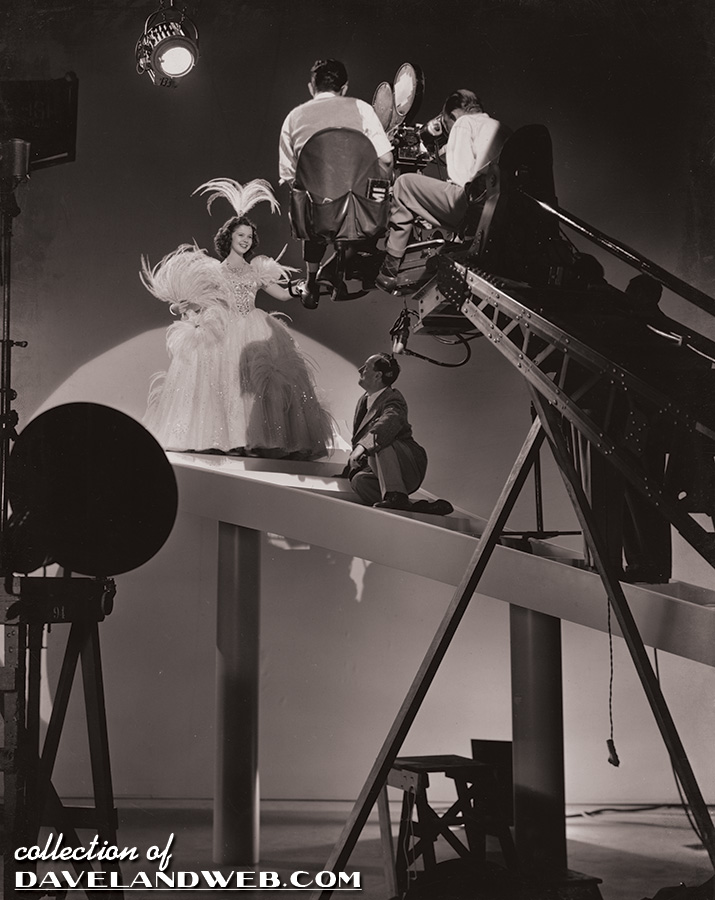
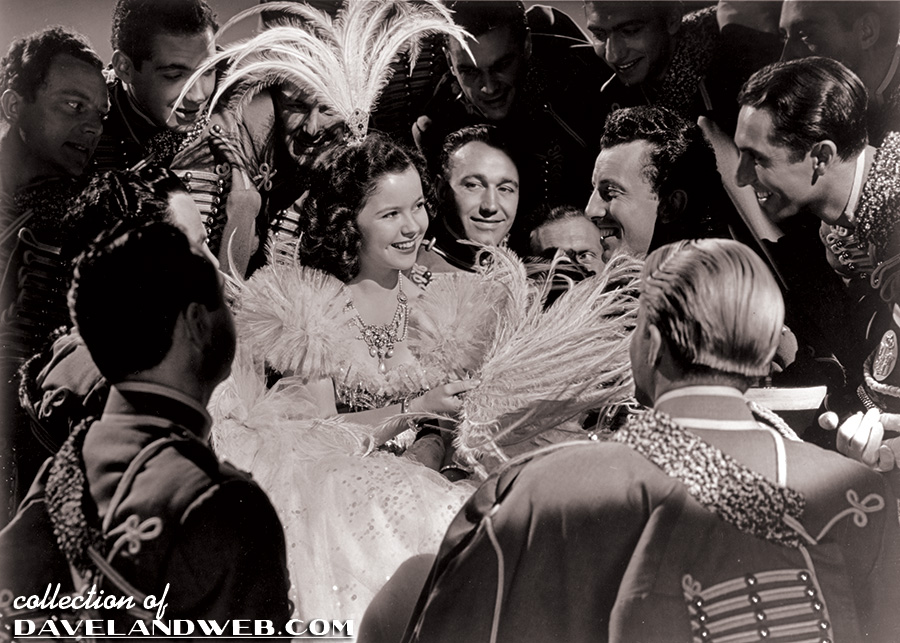
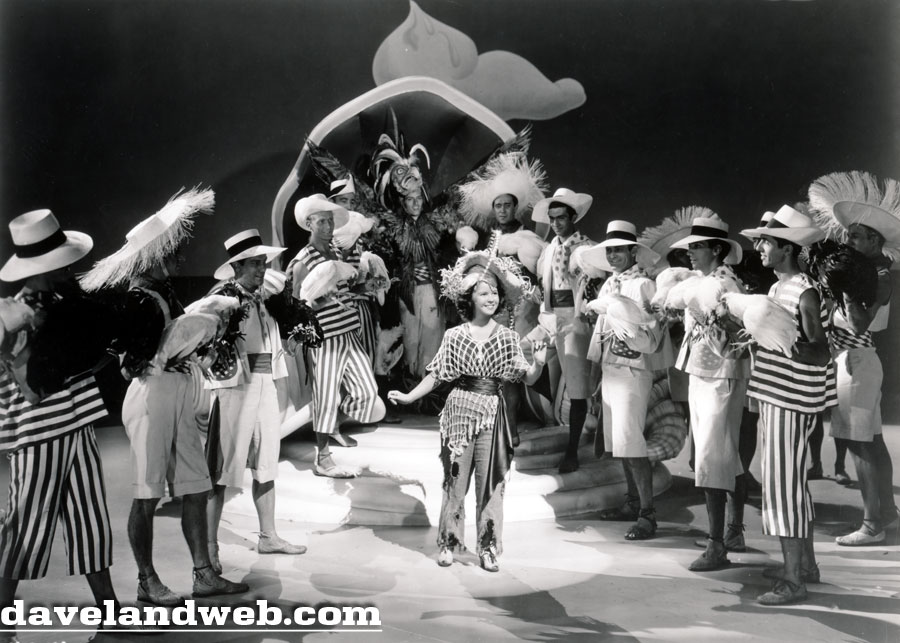


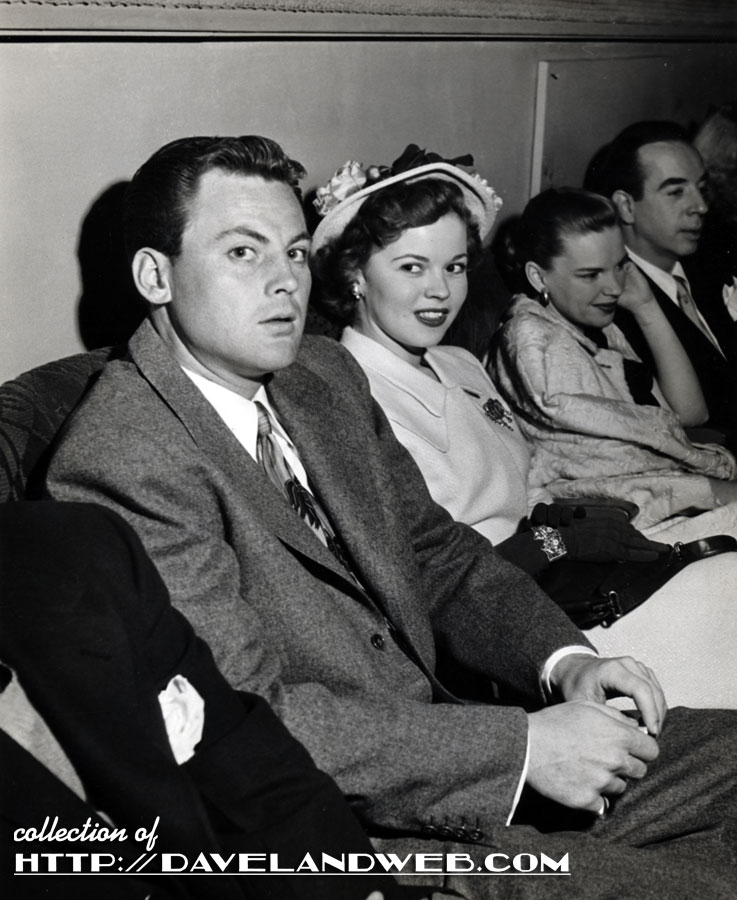
John Agar always looks like he's about to punch the camera.
ReplyDeleteWow! That's quite the story. And of course we now know what all the pushing and work and other stuff that went on did to poor Judy!
ReplyDeleteBryan - Sean Penn's inspiration?
ReplyDeleteLOL. Funny to us, not to poor Shirley.
ReplyDelete